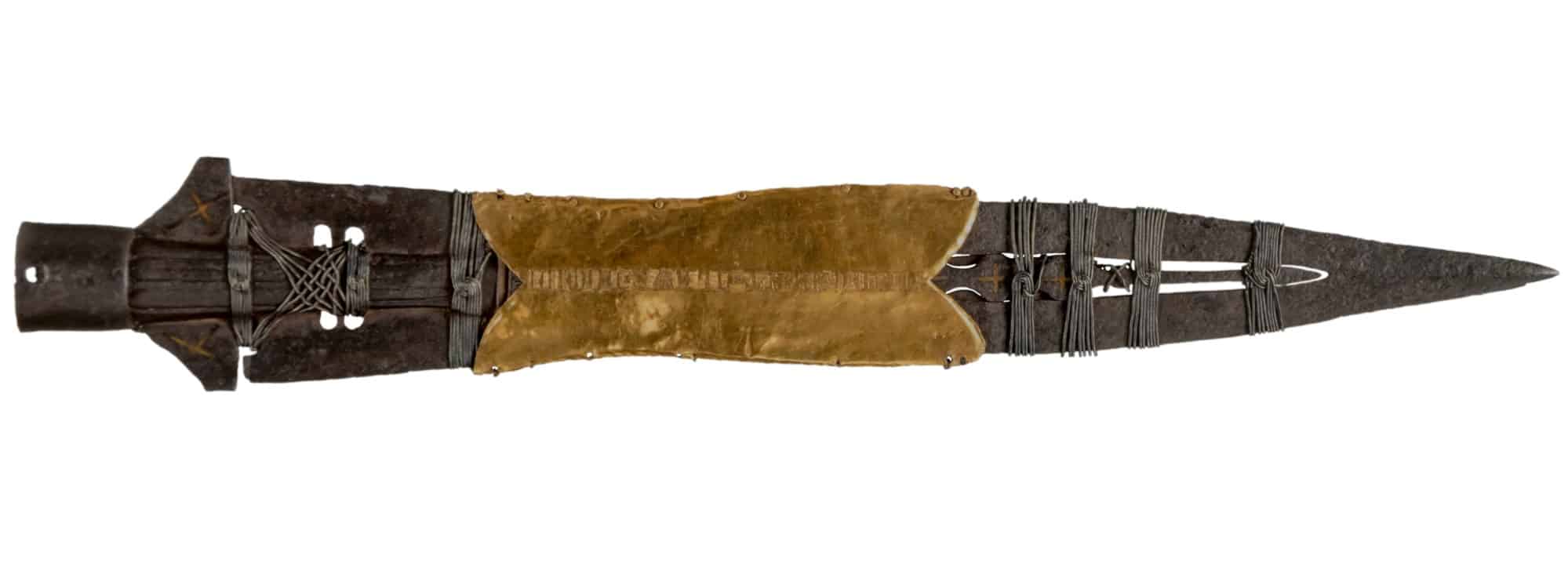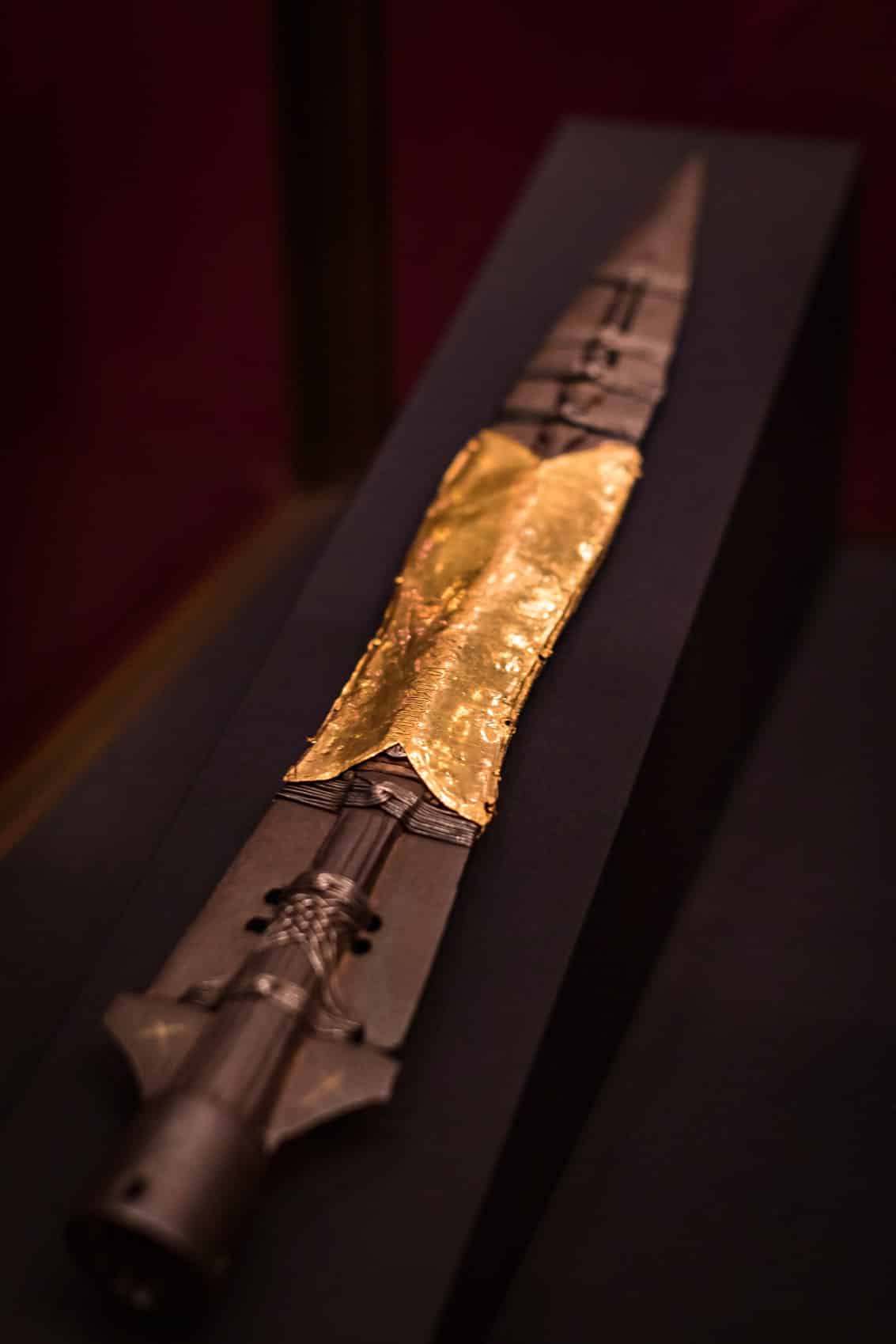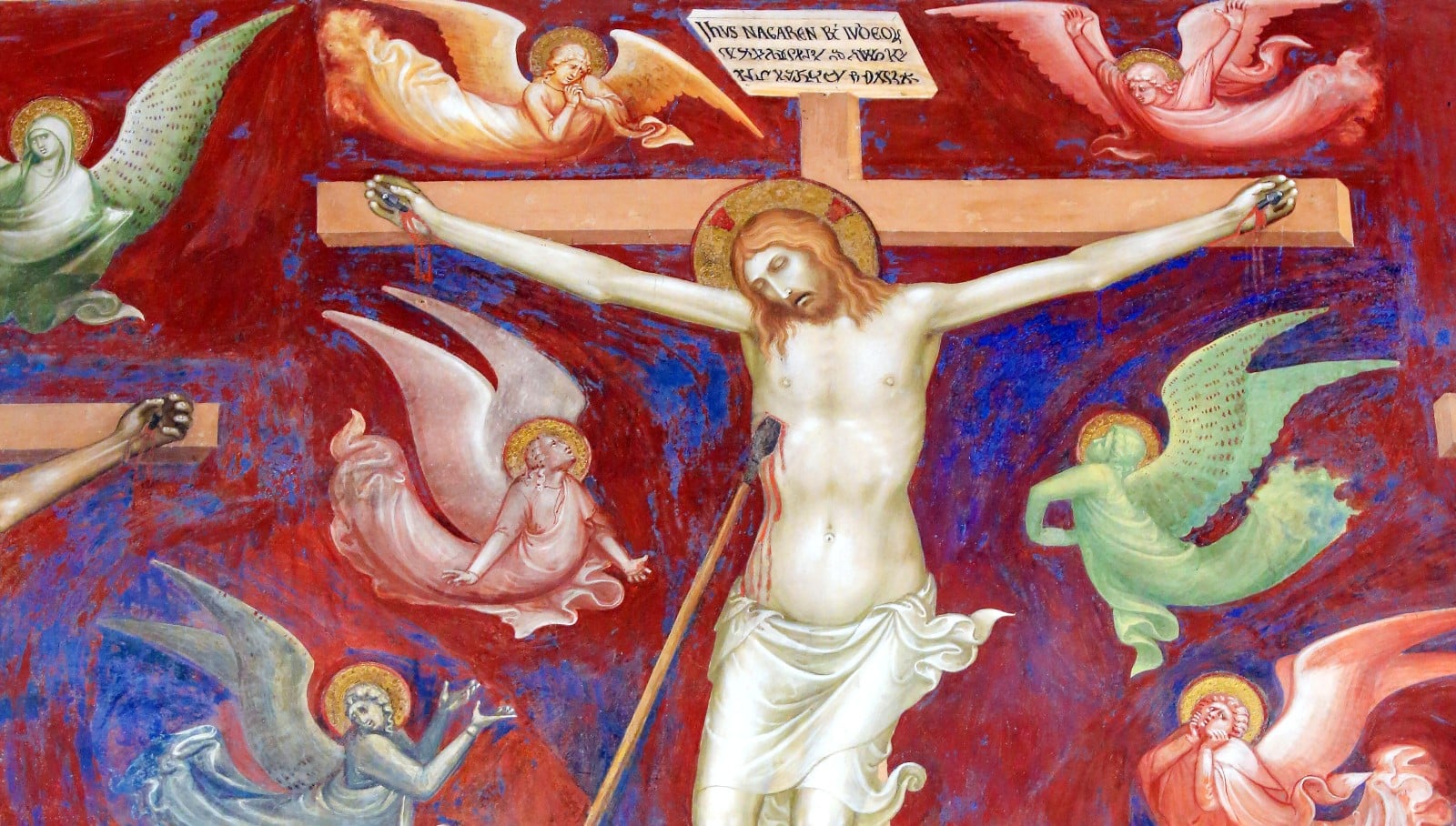
Gaius Cassius Longinus is traditionally identified as the Roman soldier who pierced the side of Jesus Christ with a lance, known as the “The Spear of Destiny” or the “Spear of Longinus,” during the Crucifixion. This account is derived from the Gospel of John in the New Testament, where a soldier pierces Jesus’ side, resulting in a sudden flow of blood and water. However, the name “Longinus” is not mentioned in the New Testament; it appears later in Christian tradition.
Several spears are claimed to be the original Spear of Destiny, each with its own unique story and gaps in history. The foremost among these is housed in St. Peter’s Basilica in Rome, under its impressive dome. This particular relic is believed to be the same one mentioned by a 6th-century pilgrim to Jerusalem, who referred to seeing “the crown of thorns with which Our Lord was crowned and the lance with which He was struck in the side.”
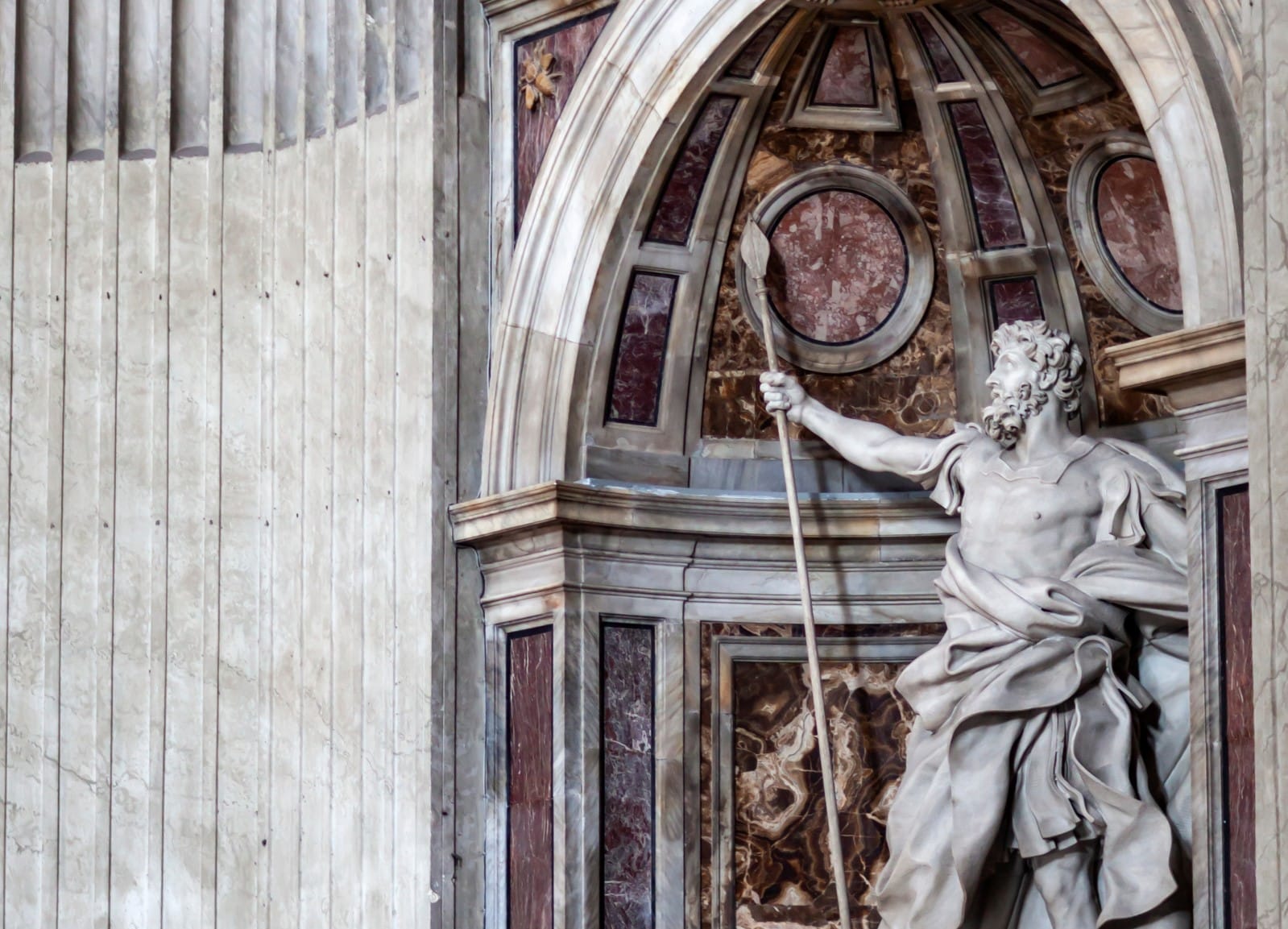
The other notable spear is the one known as the Spear of Longinus which is the focus of this article. It is displayed in the Imperial Treasury at the Hofburg Palace in Vienna, Austria. This spear garners significant attention due to its association with the Imperial Regalia, a collection of historically important symbols of kingship and royalty. The Spear of Longinus in Vienna has been particularly notable for its historical significance and the interest it has generated over the years.
According to these traditions, Longinus was a centurion, a rank in the Roman army that typically commanded a century, a unit of around 80-100 soldiers. His story has been embellished over the centuries, with various legends and tales adding to his biography.
One popular legend suggests that Longinus was blind or suffered from poor vision, and upon piercing Jesus’ side, some of the blood and water from Jesus’ wound fell into his eyes, miraculously restoring his sight. This event supposedly led to his conversion to Christianity.
The Spear of Longinus, also known as the Holy Lance, has become a significant religious relic and symbol in Christian lore. Over the centuries, several churches and cathedrals have claimed to possess the original spear, or fragments of it. The spear has been revered as a powerful relic, and it has been involved in various historical events and legends, often linked to the idea of possessing divine or supernatural powers.
Also know as The Sacred Lance crafted in the Carolingian style which features a distinctive winged design. The lance’s central spine was modified into an elongated oval by removing a section of the blade, creating space for an intricately wrought iron pin or thorn. Additionally, a pair of knife blades symmetrically placed above the lance’s wings are secured with leather straps. It’s believed that the silver wire used in the bindings was added during a later repair, following a break in the lance blade. Over time, devout imagination transformed the central pin into one of the nails believed to have been used in the Crucifixion of Christ.
The lance underwent various interpretations throughout history. It was associated with Emperor Constantine and revered as the spear of Saint Maurice, the imperial saint. By the 13th century, it was widely recognized as the Lance of Longinus, the spear that pierced Christ’s side, believed to be anointed with his blood. The relic’s significance was immense, driven by a desire to rival the Byzantine emperor’s possession of paramount Christian relics and to affirm the divine right and invincibility of rulership.
Regarded as an emblem of imperial authority, the Holy Lance was celebrated for its noble status among The Imperial Regalia, with its supposed miraculous powers credited for military triumphs. Its importance as a Passion relic was further acknowledged by its placement in the crossbeam of the Imperial Cross since the early 11th century. Emperor Charles IV (reigning from 1346-1378), a devout admirer of the lance, added a gold cuff bearing the inscription “Lance and Nail of the Lord”. He also successfully lobbied the Pope to inaugurate a feast day honoring the lance and nail.
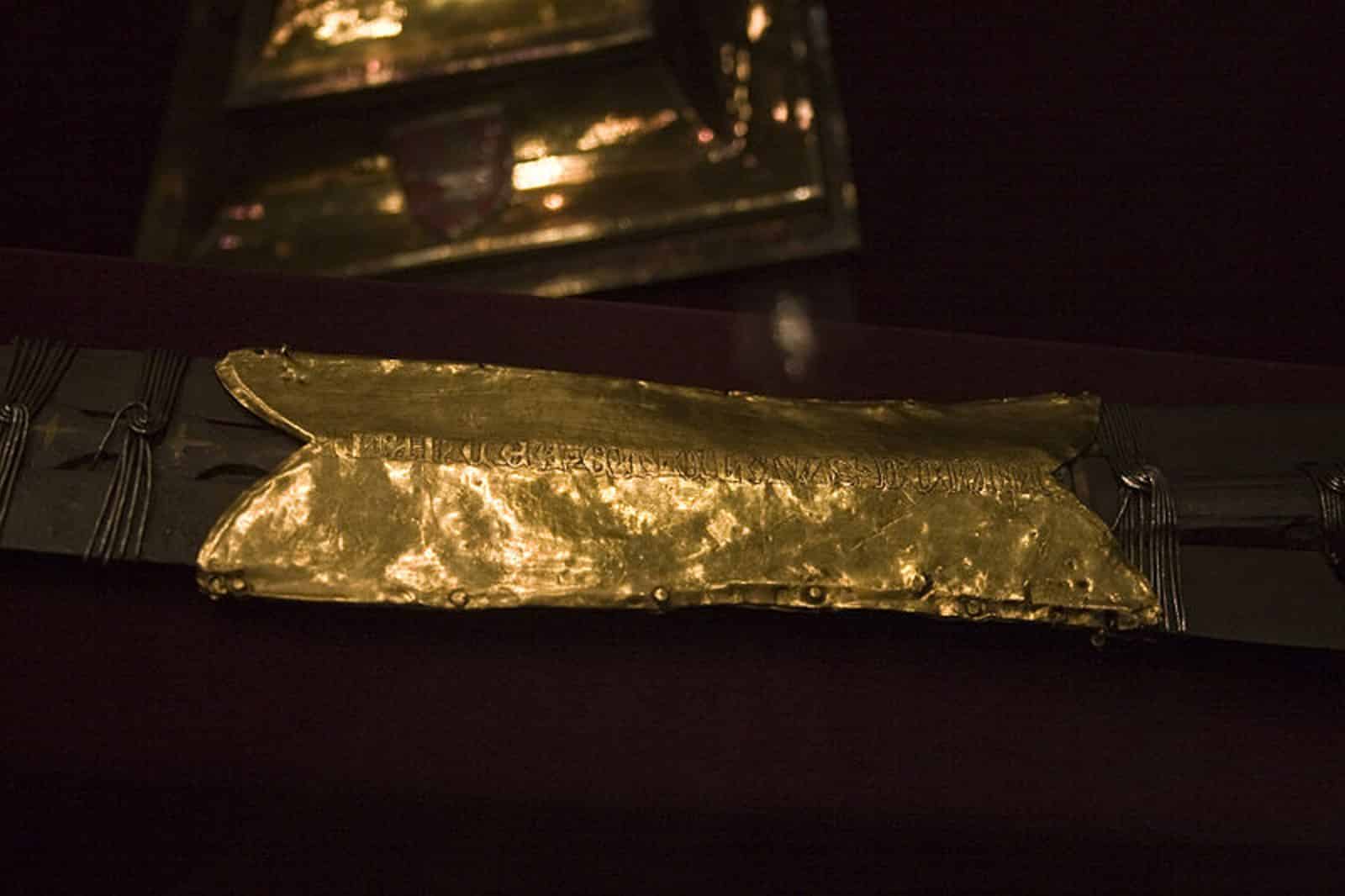
The Lance’s Makeup
Physical Description: The spear’s appearance has been described variously over the centuries such as The Holy Lance, Spear of Longinus and Spear of Destiny. The version most commonly identified as the “Spear of Destiny” and displayed in the Hofburg Palace in Vienna consists of a long iron blade which is said to be the actual lance.
Damage and Repair: There are accounts that the spear was damaged and repaired at different points in its history. One notable repair involved the addition of a golden sleeve or sheath. This sheath was reportedly added not only to repair the spear but also to enhance its appearance and possibly to commemorate its legendary status.
The Nail: One of the most significant features of the spear, as per legend, is the inclusion of a nail purported to be from the Crucifixion of Jesus Christ. This nail is said to be bound into the blade with silver wire. The inclusion of this nail adds a profound religious and mystical significance to the spear, linking it directly to the crucifixion and the legends surrounding the Holy Relics of Christianity.
It’s important to note that while the spear exists as a physical artifact, much of its story is interwoven with legend. The claims about its composition, including the presence of a nail from the Crucifixion, are part of this legendary narrative. Over the centuries, the spear has been studied, and various hypotheses have been proposed about its origin and authenticity, but its full history remains partly in the realm of mystery and legend.
As for the scientific and historical analysis of the spear’s materials and construction, there has been limited detailed public disclosure.
The Lance’s Keepers
The Spear of Destiny has a long and storied history, with various legends claiming that it was possessed by several notable kings and conquerors throughout the ages. It was said that those who possess it could change the course of mankind for good or evil. Many of those associated with the spear are both myth and historical figures. Some of the most notable figures said to have possessed the spear include:
Constantine the Great: The first Roman emperor to convert to Christianity. He is sometimes claimed to have possessed the spear, symbolizing his role as a Christian ruler.
Charles Martel: A Frankish military leader and ruler in the 8th century, known for his victory at the Battle of Tours in 732. He is sometimes associated with the spear.
Charlemagne (Charles the Great): The King of the Franks and Lombards and Emperor of the Romans during the late 8th and early 9th centuries. Legends suggest he possessed the spear and attributed his success in battle to it.
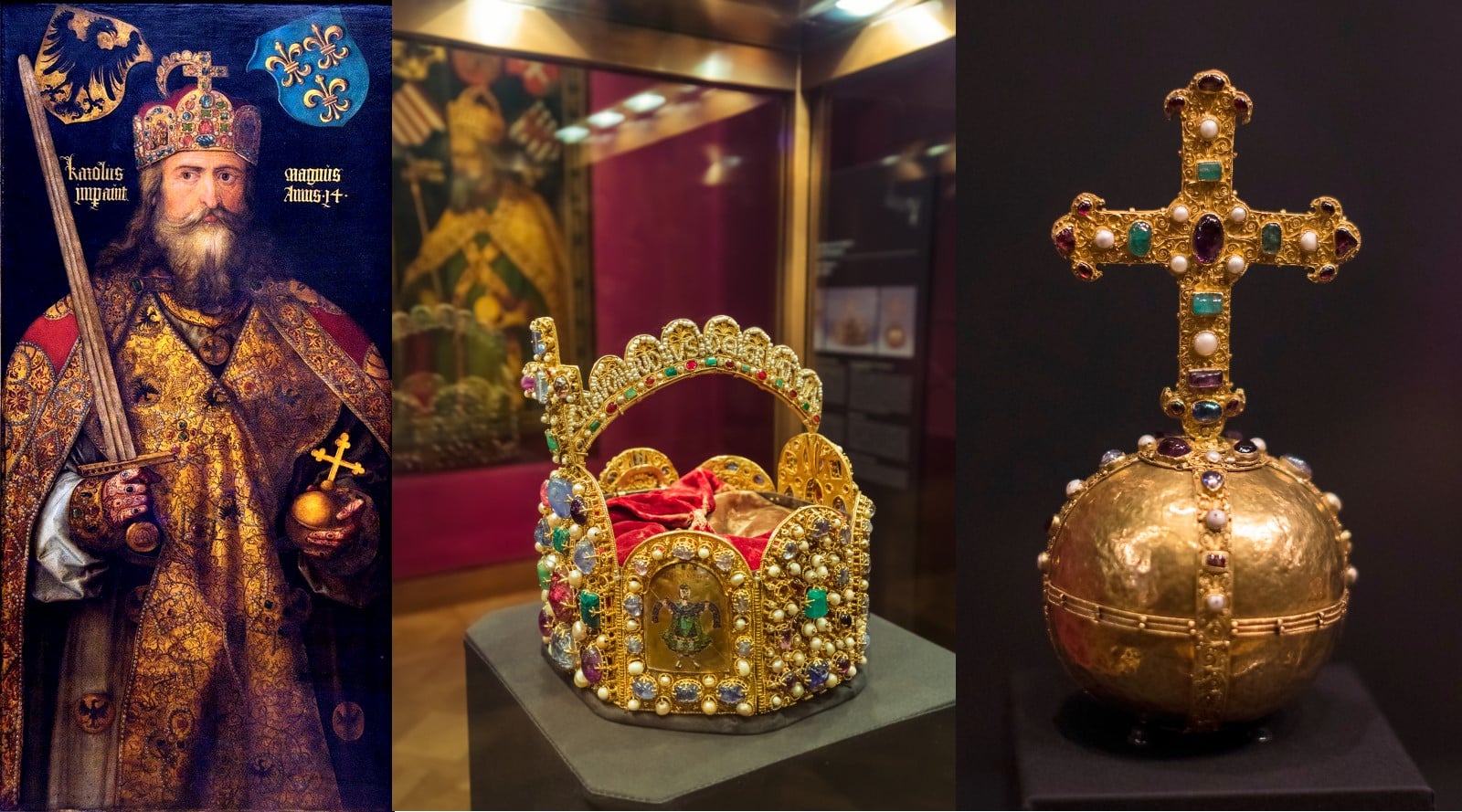
Otto I, the Great: The German king and Holy Roman Emperor in the 10th century. He was said to have possessed the spear, which was part of the Imperial Regalia of the Holy Roman Empire.
Frederick I, Barbarossa: The Holy Roman Emperor in the 12th century. He is another ruler who was believed to have been in possession of the spear.
Adolf Hitler: While not a king or traditional conqueror, Hitler was deeply interested in occult and mystical artifacts. It’s widely believed that he sought the Spear of Destiny, considering it a powerful symbol and possibly attributing mystical significance to it. He had it transferred to Nuremberg during World War II.
Adolf Hitler’s acquisition of the Spear is a subject wrapped in both historical events and speculation. According to various accounts, including those in the realm of esoteric history and legend, Hitler did indeed take possession of the Spear in his quest of world domination with the Third Reich.
The annexation of Austria by Nazi Germany, known as the Anschluss, occurred in March 1938. Hitler entered Vienna shortly after this annexation. The Spear was at that time housed in the Habsburg Treasury at the Hofburg Palace (SV) in Vienna.
Adolf Hitler is known to have had an interest in occultism and various mystical artifacts, and it’s believed that he sought the Spear of Destiny, considering it a powerful symbol. Many have sought to empower the idea that with Germany, being such a small country and having lost the first World War, could dominate the world stage of global conquest is such a brief period of time. However, the successes of Germany in the early stages of World War II could also be attributed to effective military strategies like Blitzkrieg, which combined fast-moving and well-coordinated attacks using aircraft, tanks, and infantry. Germany had a strong industrial base, which was key in the production of military equipment and supplies. Hitler’s political strategies, including forging alliances and breaking treaties, played a significant role in the initial successes. Likewise, early in the war, many of Germany’s adversaries were unprepared or slow to respond effectively to its aggressive military campaigns. But there is no doubt that Germany’s advances in global geopolitical warfare and its technological innovations like the V2 Rocket and jet aircraft, gave Hitler unimaginable prowess in his fascination of a world dominated Third Reich.
There is also the legend most commonly associated with a leader dropping the Spear and then suddenly dying is that of King Henry I of Germany, also known as Henry the Fowler. According to this legend, Henry possessed the spear and dropped it during a battle. He supposedly died soon after, in 936 AD.
This tale is part of the lore surrounding the Spear of Longinus, which includes various myths and legends about its supposed powers and the fate of those who possessed it. The spear was believed to grant invincibility in battle to its holder, but losing it was considered an omen of impending doom or death.
A Matter of Destiny?
“The Spear of Destiny” by Trevor Ravenscroft is a book that delves into the mystical and occult history surrounding the Holy Lance. Ravenscroft’s book, first published in 1973, is a mix of history, esoteric lore, and speculation. It suggests that the spear, which has been sought after by various historical figures, holds a unique power. According to Ravenscroft, the spear served not only as a symbol of military and spiritual power but also as a tool of destiny for those who possessed it.
The book delves into the history of the spear, tracing its ownership through various historical figures, including Roman emperors and Germanic leaders including with Adolf Hitler and the Nazi regime. Ravenscroft alleges that Hitler was obsessed with the spear and its supposed powers, believing that it would help him conquer the world.
It is believed that Napoleon sought to possess the Spear of Longinus as it would make his army invincible. Napoleon was determined to capture the Holy Lance after the Battle of Austerlitz in 1805, but it had been smuggled out of Vienna before the battle.
Ravenscroft’s work is based on a blend of historical facts, legends, and his interpretations of various mystical and occult traditions. He claims to have derived much of his information from Dr. Walter Stein, an Austrian philosopher and a student of Rudolf Steiner, who allegedly had firsthand experiences related to the spear and its history and Hitler.
During World War II, the spear was under Hitler’s control until the Allied forces approached Berlin. In a bunker filled with various artifacts, an American soldier found the spear. Recognizing its significance, General Patton assumed its custody, ensuring its authentication and protection until the end of the war. It is said that Hitler took his life just three hours after losing the spear.
Nuremberg Castle

Patton harbored an intense fascination with the Spear of Destiny, fearing its potential as a catalyst for Nazi revival. His fixation ran so deep that he even composed a poem about the relic. Patton assigned an elite team of soldiers to deviate from their main mission and hunt for the hidden vault.

The assault on Nuremberg was fierce, raining a heavy barrage on the historic city. The German troops were ordered to defend this ideological stronghold of the Third Reich to their last breath. The brutality of the scene was staggering. Patton’s designated squad, in their quest for the vault, engaged in intense close-quarter battles through the city’s streets, suffering significant casualties.
Reaching the location proved challenging due to the extensive destruction. Eventually, a soldier discovered a narrow gap in the rubble, leading to a tunnel sealed with a hefty steel door. As they prepared to use explosives to gain entry, a city official provided the combination, sparing the contents from damage. Inside, they found not just a single vault, but a network of interconnected tunnels and rooms, repurposed from ancient beer cellars beneath the castle. Equipped with its own power generator, living quarters, and air filtration system, the facility represented the pinnacle of 1940s technology. These chambers were crammed with a vast array of treasures plundered by the Nazis, revealing the staggering scale of their looting operations. They cataloged the findings and confirmed the presence of the Crown Jewels including the Holy Lance.
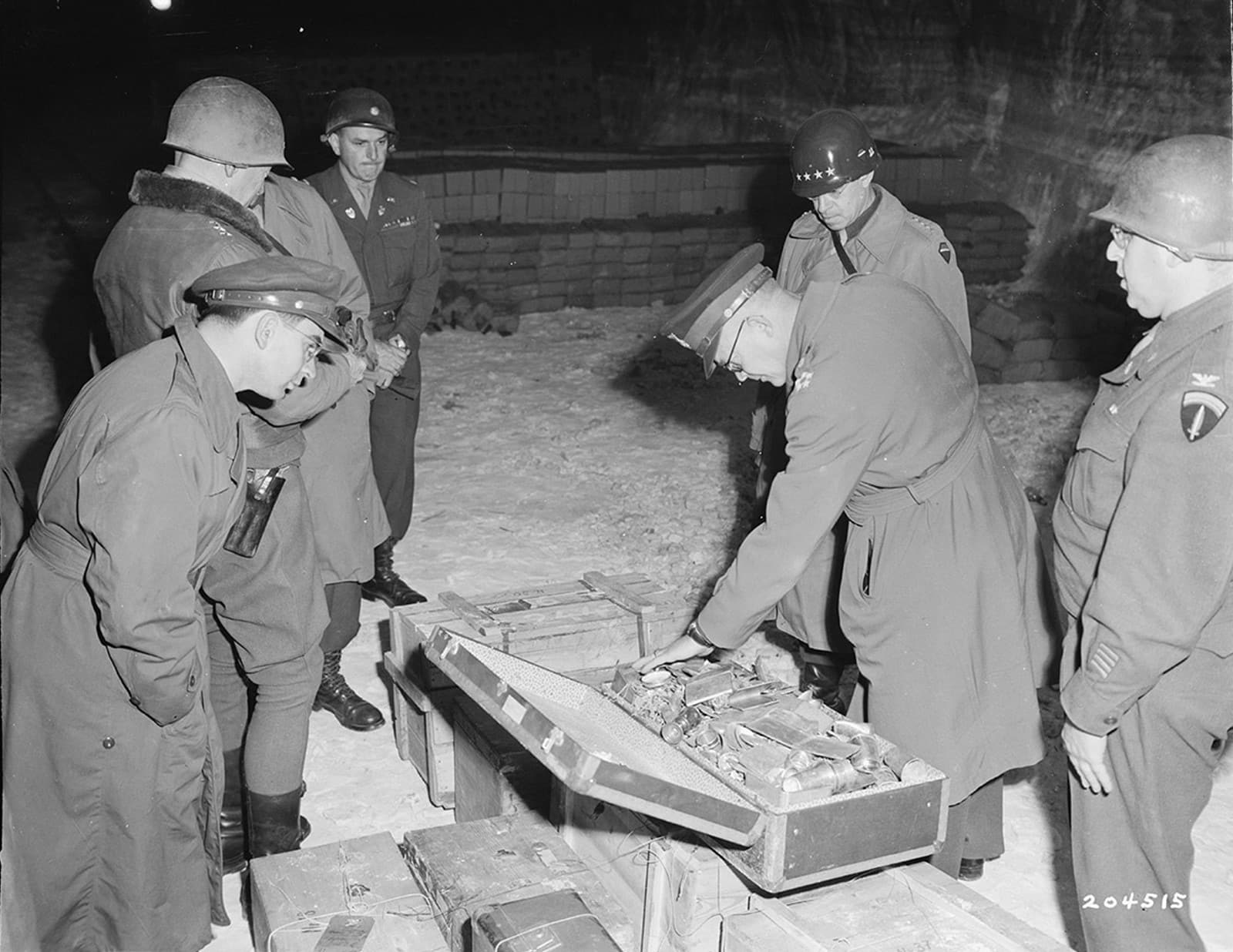
Debate ensued over the disposition of these treasures. It was anticipated their return to a museum in Vienna, but Patton, consumed by his obsession with the Spear, wished to retain it. This led to a contentious standoff with General Eisenhower. Before the matter could be resolved, Patton’s untimely demise in a car accident occurred. Eventually, the complete treasure was repatriated to Vienna.
America’s Possession of the Spear
Being that the Spear of Destiny was recovered by American troops in Nuremberg in April 1945, The Spear was in the possession of American forces during the atomic bombings of Hiroshima and Nagasaki in August 1945. and was then returned to Austria on January 30, 1946.
These details lend credence to the belief held that the spear holds the power to influence destiny for those that possesses it, as America and the world’s nuclear age had begun.

Viewing the Spear of Longinus
The spear is displayed in the Weltliche Schatzkammer (Secular Treasury) part of the Kunsthistorisches Museum (Museum of Art History) located in the Hofburg Palace in Vienna, Austria. Here’s how you can plan a visit:
Travel to Vienna: Arrange your travel to Vienna, the capital city of Austria. Vienna is well-connected internationally and can be reached by air, rail, or road.
Kunsthistorisches Museum: The spear is housed in the Kunsthistorisches Museum, which is one of the most renowned art museums in the world. The museum is located in the center of Vienna and is easily accessible by public transport.
Secular Treasury: Inside the museum, you will need to find the Weltliche Schatzkammer or the Secular Treasury. This section of the museum houses a collection of secular treasures, including the Spear of Destiny.
Explore the Surrounding Area: The Hofburg Palace and the surrounding area are rich in history and culture. Allocate time to explore other attractions in the area as well.
Treasury of the Habsburg dynasty Museum
Albertinaplatz/Maysedergasse
1010 Vienna
+43 1 525 24- 0
info@khm.at
What is a Religious Traveler?
A religious traveler is not just a tourist, but a seeker of knowledge, spiritual enlightenment, and historical truths, driven by a desire to experience the diverse manifestations of faith and devotion around the world. They explore various temples, shrines, churches, mosques, and other holy places, seeking deeper understanding and connection with their faith. Their journey is as much about internal exploration and finding personal peace, as it is about understanding the tapestry of religious beliefs and practices that bind humanity.

